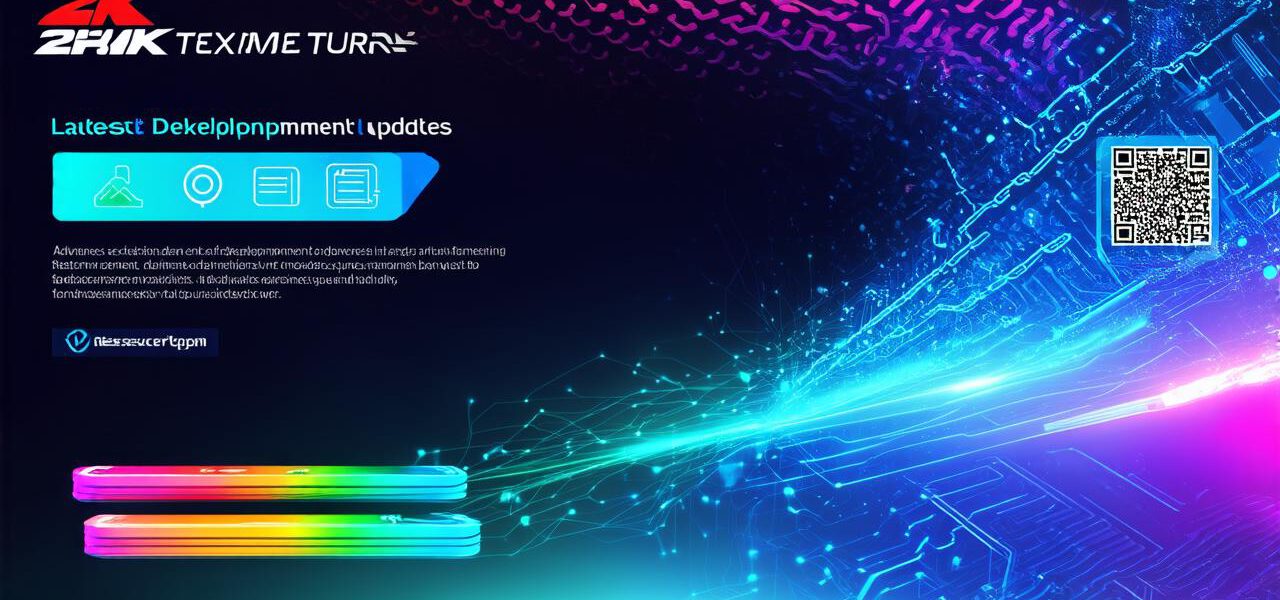
Latest Updates on Blockchain Development
What is Blockchain Technology?
Blockchain technology is a decentralized, distributed ledger that allows for secure and transparent transactions without the need for intermediaries. It enables users to store data in blocks, which are linked together using cryptographic algorithms. Each block contains information about transactions, such as the date, time, amount, and sender/receiver. Once a block is added to the chain, it cannot be altered or deleted, creating an immutable and auditable record of all transactions.
Advantages of Blockchain Technology
- Security: One of the most significant advantages of blockchain technology is its security features. The decentralized nature of blockchain means that there is no central point of failure, making it more resistant to hacking and cyber attacks. In addition, the use of cryptographic algorithms ensures that data is encrypted and secure, preventing unauthorized access or manipulation.
- Transparency: Blockchain technology provides a high level of transparency by allowing users to access and verify all transactions on the network. This enables organizations to increase trust and reduce fraud, as all transactions are recorded in an open ledger that can be accessed by anyone.
- Efficiency: Blockchain technology streamlines processes and reduces costs by eliminating intermediaries, such as banks or other financial institutions. Transactions can be processed faster and more efficiently, reducing the need for paper-based systems and manual processing.
- Traceability: Blockchain technology enables organizations to track the movement of assets, products, and services across the supply chain. This can improve traceability, reduce waste, and enhance customer satisfaction by providing real-time information about product origin, quality, and delivery status.
Limitations of Blockchain Technology
- Scalability: One of the biggest challenges facing blockchain technology is its scalability limitations. Currently, some blockchain networks, such as Bitcoin, can only process a limited number of transactions per second, which makes them less suitable for high-volume applications.
- Regulatory Challenges: The lack of clear regulations and guidelines around blockchain technology creates uncertainty for businesses and organizations. This can make it difficult to implement blockchain solutions and navigate legal and compliance requirements.
- Cost: Blockchain technology requires significant resources, such as computing power, energy consumption, and specialized expertise, which can be expensive to acquire and maintain.
- Complexity: Blockchain technology is still relatively new and complex, which makes it difficult for some organizations to adopt and integrate into existing systems.
Blockchain Development Updates
1. Ethereum 2.0: One of the most significant updates in blockchain development is the launch of Ethereum 2.0. This upgrade aims to improve the scalability, security, and performance of the Ethereum network, making it more suitable for enterprise applications. Ethereum 2.0 uses a new consensus mechanism called Proof of Stake (PoS), which requires users to lock up their Ether tokens as collateral to validate transactions and secure the network.
2. Bitcoin Lightning Network: Another major update in blockchain development is the launch of the Bitcoin Lightning Network. This upgrade enables faster, cheaper, and more private transactions on the Bitcoin network by allowing for off-chain scaling. The Lightning Network uses state channels to enable instant and near-zero cost transactions, making it an ideal solution for microtransactions and other low-value applications.
3. Hyperledger Fabric: Blockchain technology is increasingly being used in supply chain management to improve traceability, reduce waste, and enhance customer satisfaction. Companies such as Walmart, Maersk, and IBM are using blockchain-based solutions to track the movement of products across the supply chain, enabling real-time information about product origin, quality, and delivery status. Hyperledger Fabric is a popular open-source blockchain platform that enables organizations to create customized blockchain solutions for various use cases, including supply chain management.
4. Blockchain-based Identity Management: Blockchain technology is also being used in identity management to improve security, privacy, and interoperability. By using blockchain-based identity management solutions, individuals can control their own personal data and share it only with trusted parties, reducing the risk of identity theft and other security breaches.
Conclusion
Blockchain technology is transforming various industries by providing a secure, transparent, and efficient way to store, share, and access data. While there are still challenges to overcome, such as scalability limitations and regulatory uncertainty, the latest updates in blockchain development, such as Ethereum 2.0, Bitcoin Lightning Network, Hyperledger Fabric, and blockchain-based identity management, demonstrate the potential of this technology to revolutionize the way we do business. As organizations continue to explore the benefits of blockchain, it’s important to stay informed about the latest developments and updates to ensure that they can leverage this technology effectively and efficiently.



